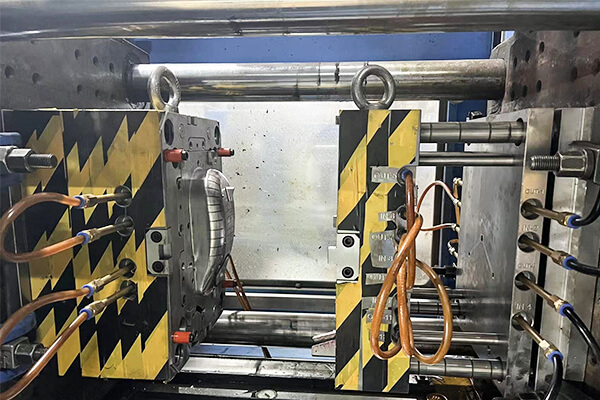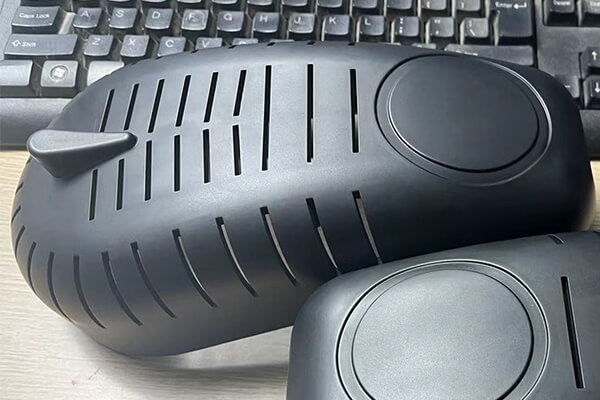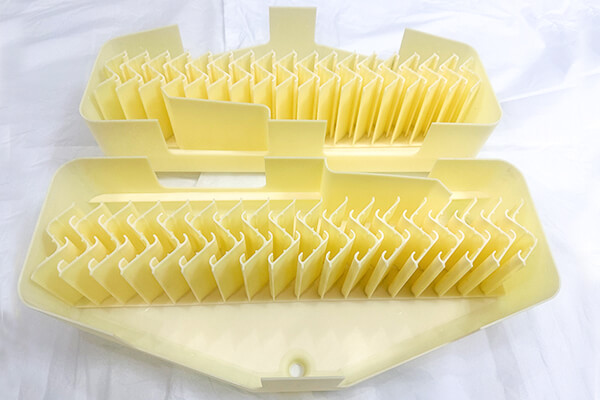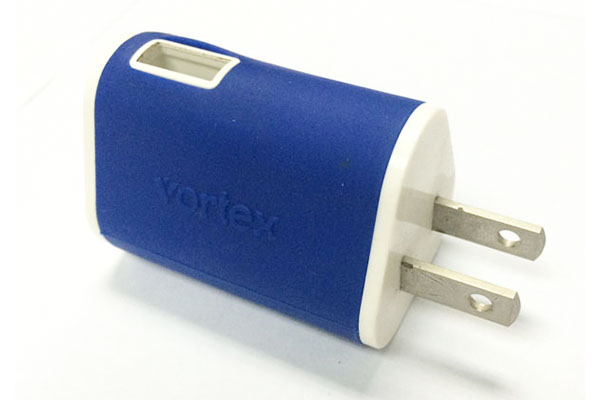Plastic Part Manufacturing: How to Get Plastic Parts Made?
In the continuous development of the society, the use of plastic parts or products is more and more frequent. Such as the common water bottles, toys parts, acrylic vases, food packing boxes and so on. Plastics are synthetic polymers that can be formed in various shapes and styles and sizes. Plastic part manufacturing caters to various industries and applications, playing a role in all aspects of people’s food, clothing, shelter and transportation.
Sungplastic specializes in plastic part manufacturing for many years, delving into plastic industry, plastic part manufacturing techniques and how to get plastic parts made.
If you need the help of your plastic part manufacturing projects, welcome to contact us.
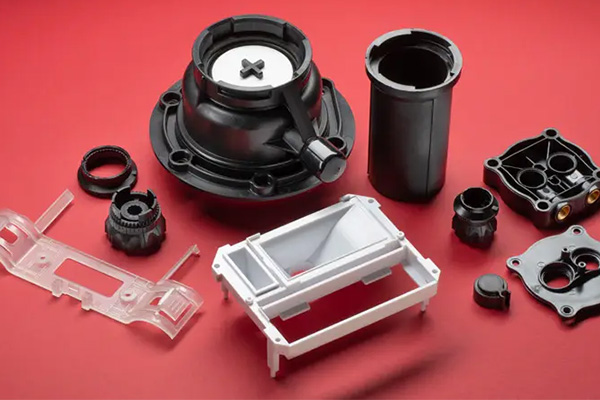
Plastics and Its Types
Plastics are synthetic polymers that are composed of long chains of repeating molecular units called monomers. They are versatile materials with a wide range of applications of plastic part manufacturing due to their ease of processing, durability, and ability to be molded into various shapes and sizes. There are several types of plastics, each with its own unique properties and characteristics.
Thermoplastics
- Polyethylene (PE)
Polyethylene is one of the most widely used plastics and comes in various forms, including Low-Density Polyethylene (LDPE) and High-Density Polyethylene (HDPE). LDPE is used for items like plastic bags and squeeze bottles, while HDPE is used for containers, pipes, and bottles. - Polypropylene (PP)
Polypropylene is known for its high melting point and chemical resistance. It is used in a variety of applications, including packaging, automotive parts, and medical devices. - Polyvinyl Chloride (PVC)
PVC is known for its versatility and is used in pipes, electrical cables, clothing, and various construction materials. There are both rigid and flexible versions of PVC. - Polystyrene (PS)
Polystyrene is commonly used in the form of expanded polystyrene (EPS) for packaging materials and insulation. It is also used for disposable cups, cutlery, and CD cases. - Polyethylene Terephthalate (PET)
PET is commonly used for beverage bottles and food packaging. It is known for its recyclability and clarity. - Polyurethane (PU)
Polyurethanes are used in a wide range of products, including foams for cushions and mattresses, as well as in coatings, adhesives, and sealants. - Polycarbonate (PC)
Polycarbonate is known for its high impact resistance and optical clarity. It is used in applications like eyeglass lenses, CDs/DVDs, and protective equipment. - Acrylonitrile Butadiene Styrene (ABS)
ABS is a strong and durable plastic used in applications such as automotive parts, toys, and consumer electronics. - Polyvinyl Acetate (PVA)
PVA is often used in adhesives, glue, and as a component in some types of paint. - Nylon (Polyamide)
Nylon is a strong and durable synthetic polymer used in applications like textiles, ropes, and automotive parts. - Polyethylene Terephthalate Glycol (PETG)
PETG is a variation of PET that offers better impact resistance and is commonly used in 3D printing. - Polyether Ether Ketone (PEEK)
PEEK is a high-performance plastic known for its excellent thermal and chemical resistance. It is used in aerospace, medical implants, and industrial applications.
Thermosetting Plastics
Unlike thermoplastics, which go into a permanent solid state after curing, thermosetting plastics (also known as thermosets) do not. In thermosetting materials, polymers undergo a process known as curing, which is triggered by heat, light, or other appropriate radiation. This curing procedure creates a chemical link that cannot be broken. Thermosetting polymers do not melt when heated; instead, they breakdown, and they do not reform when cooled. It is not possible to recycle thermosets or break down the material into its constituent parts.
Common types of thermosetting plastics:
- Cyanate ester
- Epoxy
- Polyester
- Silicone
- Vulcanized rubber
Plastic Parts and Its Applications
Plastic parts refer to components or objects that are made from plastic materials. Plastic part manufacturing are commonly used in a wide range of industries and applications, including:
-
- Automotive
Plastic part manufacturing is used extensively in vehicles, including interior components like dashboards, door panels, and seats, as well as exterior parts like bumpers, fenders, and grilles. - Electronics
Many electronic devices contain plastic parts, such as casings for smartphones, tablets, and computer peripherals. - Consumer Goods
Plastic part manufacturing is commonly used in the production of consumer products such as toys, kitchenware, appliances, and packaging materials. - Medical Devices
Medical equipment and devices often incorporate plastic parts due to their biocompatibility and ease of sterilization. - Aerospace
Aircraft and spacecraft may contain plastic components, such as interior panels and structural elements. - Construction
Plastic part manufacturing are used in various construction applications, including pipes, fittings, and insulation materials. - Industrial Machinery
Plastic parts can be found in industrial equipment, such as gears, bearings, and conveyor belts. - Packaging
Plastic is a common material for packaging products due to its flexibility, durability, and ability to protect against moisture and contaminants.
- Automotive
Plastic part manufacturing uses various plastic molding processes, including injection molding, extrusion, blow molding, and thermoforming, depending on the desired shape and properties of the final product. The choice of plastic material and manufacturing process depends on factors like the intended use, cost considerations, and required performance characteristics of the parts.
Types of Plastic Part Manufacturing Processes
Plastic part manufacturing utilizes various processes, each of which has its own advantages and is chosen based on factors such as the complexity of the plastic part manufacturing, the desired volume of production, and the material being used. Here are some common types of plastic part manufacturing processes.
Injection Molding
Plastic injection molding is one of the most widely used plastic part manufacturing processes.
It involves melting plastic granules and injecting the molten material into a mold cavity.
The material cools and solidifies inside the mold, taking on its shape.
Injection molding is suitable for producing high volumes of complex parts with tight tolerances.
CNC Machining
CNC (Computer Numerical Control) machining is a subtractive manufacturing process used to shape plastic parts from solid blocks of material.
A computer-controlled machine tool (such as a milling machine or lathe) removes material from a plastic workpiece to create the desired shape.
CNC machining is ideal for producing highly precise and complex plastic parts with tight tolerances.
3D Printing (Additive Manufacturing)
3D printing is an additive manufacturing process that builds plastic parts layer by layer from digital 3D models.
Various 3D printing technologies exist, including Fused Deposition Modeling (FDM), Stereolithography (SLA), and Selective Laser Sintering (SLS).
3D printing is suitable for rapid prototyping, low-volume production, and creating intricate and customized plastic parts.
Insert Molding
Insert molding is a process where pre-fabricated components (e.g., metal inserts, electronic components) are placed into the mold, and plastic is injected to encapsulate and bond them.
It is often used to combine plastic and non-plastic parts into a single assembly.
Compression Molding
Compression molding is used for producing parts with complex shapes and relatively low volumes.
Plastic material is placed in a heated mold, and pressure is applied to compress and shape the material.
It is often used for products like automotive parts and composite materials.
Blow Molding
Blow molding is commonly used for producing hollow parts like bottles and containers.
A tube of molten plastic (a parison) is extruded into a mold cavity.
Compressed air is then blown into the parison, causing it to expand and take on the shape of the mold.

Transfer Molding
Transfer molding is similar to compression molding but involves a hydraulic press and a heated plunger to transfer material into the mold.
It is used for producing parts with intricate details and high precision.
Extrusion
Extrusion is used for creating continuous plastic profiles with a constant cross-section.
Plastic material is melted and forced through a die to produce the desired shape, such as pipes, tubing, and window frames.
After extrusion, the material is typically cut to the desired lengths.
Thermoforming
Thermoforming is used for plastic part manufacturing with shallow or moderate depths.
A sheet of thermoplastic material is heated and then draped over a mold.
Vacuum or pressure is applied to force the material against the mold, shaping it.
This process is often used for packaging, trays, and disposable containers.
Injection Compression Molding
Injection compression molding combines features of both injection molding and compression molding.
It is used for plastic part manufacturing with reduced internal stresses, improved surface finish, and precise dimensions.
Injection Blow Molding
This process combines elements of injection molding and blow molding.
A preform is created using injection molding, and then it is blown into its final shape in a separate mold.
It is commonly used for producing small bottles and containers.
Reaction Injection Molding (RIM)
RIM combines two liquid components (polyols and isocyanates) to create a chemical reaction that forms the plastic part.
It is often used for producing large, complex parts with high strength and impact resistance.
Rotational Molding (Rotomolding)
Rotomolding is suitable for producing large, hollow plastic parts.
A mold is filled with plastic powder, which is then rotated in an oven.
The heat causes the powder to melt and coat the interior of the mold, forming the desired shape.
Vacuum Casting (Polyurethane Casting)
Vacuum casting involves creating silicone molds from a master pattern and then pouring liquid polyurethane resin into the molds.
It is often used for producing small to medium quantities of plastic parts with high detail and surface finish quality.
Ultrasonic Welding
Ultrasonic welding is a joining process used to bond plastic parts together.
High-frequency ultrasonic vibrations are applied to the parts at their contact points, causing them to melt and fuse together.
This process is commonly used in the assembly of plastic components, such as in the automotive and electronics industries.
Gas Assisted Injection Molding
Gas-assisted injection molding involves injecting a pressurized gas (usually nitrogen) into the melt during the molding process.
This creates hollow sections or complex geometries within the plastic part while reducing material usage and minimizing sink marks.
In-Mold Decoration (IMD)
In-mold decoration is a process where decorative graphics or labels are applied to the plastic part during the molding process.
It results in a durable and aesthetically pleasing finish without the need for post-molding decoration.
Electroforming
Electroforming is a process that uses electroplating to create intricate, metal-plated plastic parts.
It is often used for making precision components, such as microstructures and molds.
These processes offer more options for plastic part manufacturing to meet specific requirements, whether it’s for prototyping, low-volume production, or specialized applications. The choice of process depends on factors such as part complexity, material properties, production volume, and cost considerations.
How to Get Plastic Parts Made?
Plastic part manufacturing involves several key steps in the process, from concept and design to production and quality control. Here’s a general overview of the steps involved in getting plastic parts made.
-
- Concept and Design
Start by defining the purpose and specifications of the plastic part you need.
Create a design concept or sketch that outlines the size, shape, and features of the part.
Use computer-aided design (CAD) software to create a detailed 3D model of the part. - Material Selection
Choose the appropriate plastic material for your plastic part manufacturing based on factors like strength, durability, chemical resistance, and cost.
Consider factors such as the intended use, environment, and regulatory requirements. - Prototyping (Optional)
Before moving to mass production, consider creating a prototype of the plastic part to test its design and functionality.
Prototyping methods can include 3D printing, CNC machining, or even low-volume molding processes. - Tooling Design and Fabrication
Design the molds or tooling required for the manufacturing process.
Depending on the manufacturing method (e.g., injection molding, extrusion), molds or dies are created from materials like steel or aluminum.
Tooling fabrication may take some time and can be a significant initial cost. - Manufacturing Process Selection
Choose the most suitable manufacturing process for your plastic part manufacturing based on factors such as part complexity, production volume, and cost.
Common processes include injection molding, extrusion, thermoforming, or CNC machining, among others. - Production
Once the tooling is ready and the manufacturing process selected, production can begin.
Raw plastic material is processed, shaped, and molded into the final part.
Quality control measures, including inspection and testing, are implemented during production to ensure consistency and adherence to specifications. - Assembly (If Necessary)
If your product or assembly requires multiple plastic parts or integration with other components (e.g., metal or electronic parts), assembly processes are carried out. - Finishing and Surface Treatment (Optional)
Depending on your requirements, finishing processes like polishing, painting, plating, or printing may be applied to enhance the appearance and functionality of the part. - Quality Control and Testing
Conduct thorough quality control checks and testing to ensure that the plastic part manufacturing meet the desired specifications and standards.
Inspect for defects, dimensional accuracy, and structural integrity. - Packaging and Shipping
Package the finished plastic parts securely for shipping or distribution.
Consider environmental concerns and sustainable packaging options. - Distribution and End Use
Distribute the plastic parts to their intended locations or customers for their end-use applications.
Monitor the performance of the parts in the field and gather feedback for continuous improvement if necessary. - Recycling (End of Life)
Consider recycling options for plastic parts at the end of their useful life to minimize environmental impact.
- Concept and Design
Throughout the entire plastic part manufacturing process, effective communication with the chosen manufacturer is essential. Clear communication ensures that design specifications are met, and any issues or changes can be addressed promptly.
How to Choose the Right Plastic Part Manufacturing Process?
Choosing the right plastic part manufacturing process is a critical decision that can impact the cost, quality, and performance of your plastic components. To make an informed choice, consider the following factors.
-
- Part Complexity
Assess the complexity of your plastic part. Some manufacturing processes are better suited for simple, straightforward shapes, while others can handle highly intricate and complex geometries.
Injection molding, for example, is ideal for complex parts with intricate details, while processes like extrusion or thermoforming are better for simpler shapes. - Production Volume
Determine the anticipated production volume. High-volume production is typically best served by processes like injection molding, which offer high efficiency and lower per-unit costs.
For low-volume or prototyping needs, consider 3D printing or CNC machining, which are more cost-effective for smaller quantities. - Material Selection
The choice of plastic material is crucial and may dictate the manufacturing process. Different processes work better with specific types of plastics.
Ensure compatibility between the chosen material and the selected manufacturing method in terms of melting point, flow characteristics, and other material properties. - Tolerances and Precision
Consider the required tolerances and precision for your part. Some processes, like CNC machining, offer very tight tolerances and high precision.
If your part requires high accuracy, machining or other high-precision processes may be necessary. - Lead Time
Evaluate your project’s timeline and lead time requirements. Some manufacturing processes are faster than others.
Injection molding, for instance, can produce parts quickly once the molds are ready, while 3D printing can provide rapid prototyping within hours. - Cost Constraints
Determine your budget constraints. Different manufacturing processes have varying upfront tooling costs, material costs, and labor costs.
While processes like injection molding may have high initial tooling expenses, they can offer lower per-unit costs for large production runs. - Post-Processing and Finishing
Think about any post-processing or finishing requirements. Some processes, like 3D printing, may require additional steps to achieve the desired surface finish or strength.
Processes like injection molding can produce parts with a finished appearance directly from the mold. - Experience and Expertise
Consider the expertise and experience of your manufacturing partner. Some processes require specialized knowledge and equipment.
Choose a manufacturer with a track record of successfully producing parts similar to your requirements. - Flexibility for Iterations
If your design may undergo changes or iterations, consider a manufacturing process that allows for flexibility and easy adjustments, such as 3D printing for prototyping.
- Part Complexity
By carefully evaluating these factors and consulting with experts or manufacturers with expertise in plastic part manufacturing, you can make an informed decision on the most suitable manufacturing process for your specific project.
Sungplastic Helps with Plastic Part Manufacturing
As a professional plastic part manufacturer, our solutions includes:
Small and large plastic part manufacturing
Low to high volume production
CNC machining for plastic parts
Injection molding for plastic parts
3D printing for plastic parts
Insert molding for plastic parts
Rapid prototyping
Tooling manufacturing
From part design to custom parts production
In addition, controllable tooling cost, good flexibility and reactivity (from prototyping to large series, deliveries everywhere in the world), very competitive pricing, quality guaranty, technical support and one stop solutions are provided.
Sungplastic is among the advanced technology and manufacturing solutions company specializing in highly reliable and quality plastic part manufacturing services for long product life cycle in the automotive, industrial, medical, electronics, consumer goods and other markets.
If you are preparing for your plastic part manufacturing projects, welcome to discuss with us and gain some advice.
Get a free quote and design analysis today.
We’ll reply to you within 6 working hours.
We respect your privacy.
+86 139 2927 4777 (WhatsApp, Wechat)

